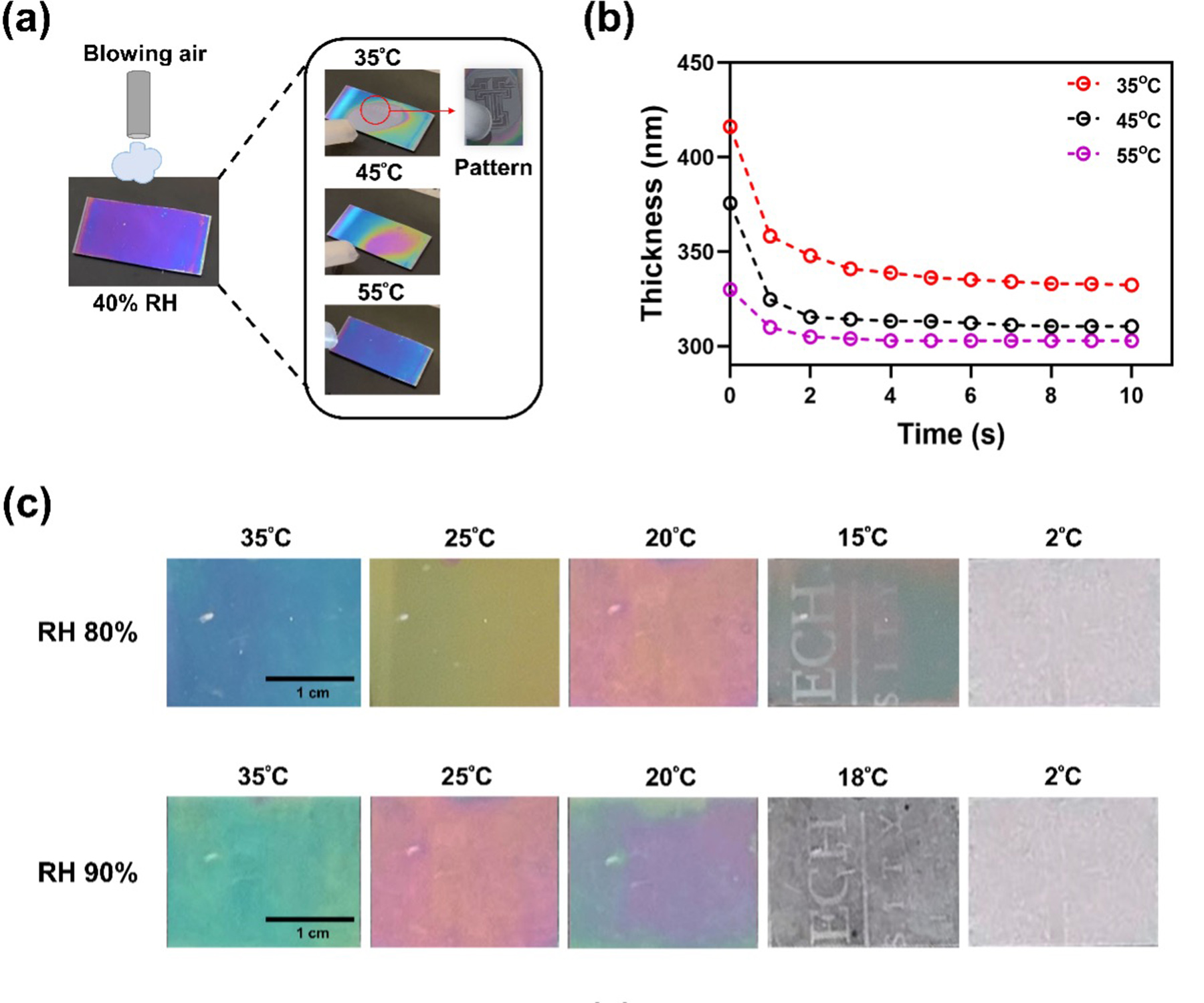Relative humidity (RH) and temperature responsive nanofilms have been developed as colorimetric sensors based on light interference, with the sensors providing rapid and easy detection, high accuracy, good mobility, wearability, and power-free sensing ability. However, current studies on RH and temperature-sensitive colorimetric films focus only on the effect of either temperature or RH on the sensing ability. With an inherent relationship between temperature and RH, this constraint leads to significant limitations for the use of thin film sensors in practical applications. In this work, we address these limitations by examining the correlation between structural color (thickness), temperature, and RH using nanolayered polyelectrolyte films made from chitosan (CHI) and carboxymethyl cellulose (CMC). We propose a novel 3-dimensional (3D) non-linear regression model to describe the correlation between the normalized thickness, temperature, and RH; with the thickness prediction showing high agreement with experimental results. Furthermore, photoreactive carboxymethyl cellulose-azido derivative (CMC-N
3) was used to build CHI/CMC-N
3 films that can covalently crosslink upon UV irradiation [1]. By taking advantage of different swelling behaviors of CHI/CMC-N
3 films before and after UV treatment, a variety of color and crosslinked patterns are hidden/displayed at selected RHs and temperatures. This enables a tunable multimodal display of the pattern-encoded information. Remarkably, in temperature ranges from 2°C to 55°C, uniform colors covering the entire visible spectra were observed, while in the low temperature (2-10°C) and high RH (~80%) regimes, the film demonstrated vivid color changes with 1°C resolution.
The project was further extended to monitor and record of subzero temperatures up to -30°C based on the color response. Specifically, the film was enclosed in a sealed petri dish to control the amount of moisture condensed on the film. Consequently, it displayed uniform colors at (0 to -30°C) temperatures. The color changing behavior was reversible in response to temperatures and RH. By introducing moisture absorber inside the petri dish at subzero temperatures, the color changing behavior became irreversible. After placing the film at room temperature for a certain period, the moisture was absorbed, hence, the film did not change the color in even after placing back at subzero temperatures. The moisture absorbing behavior was dependent on the absorber type, weight of absorber, storage temperature and RH inside the petri dish. Hence, a wide range of temperature history recording technique was demonstrated.
Due to the attractive properties of the nanofilm, we expect the film to provide a versatile platform for potential applications in environmental sensing, anticounterfeiting, food storage, and quality control in drug transport.


